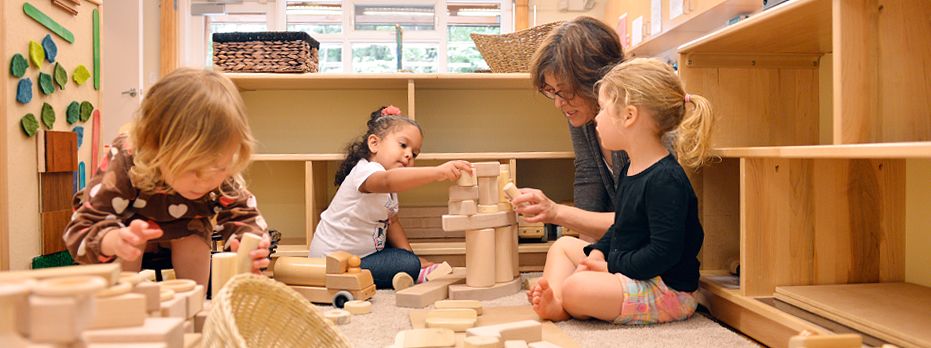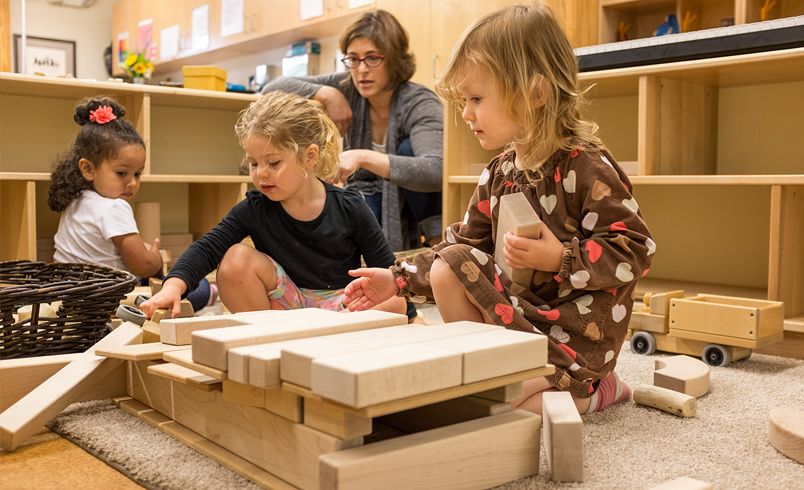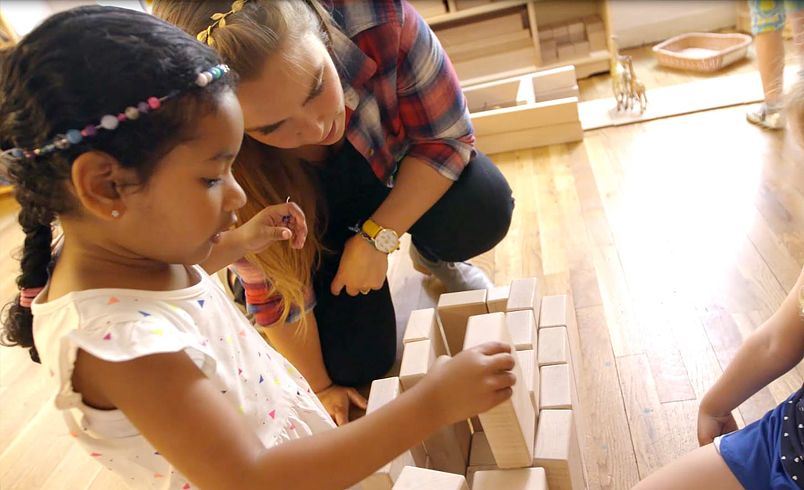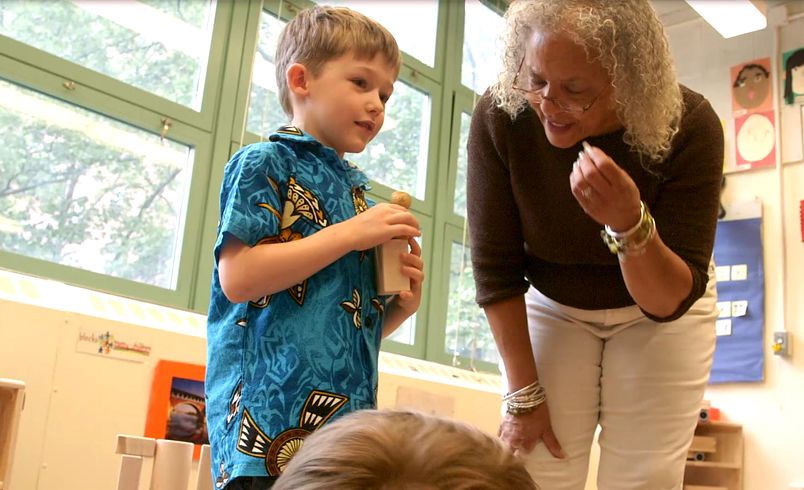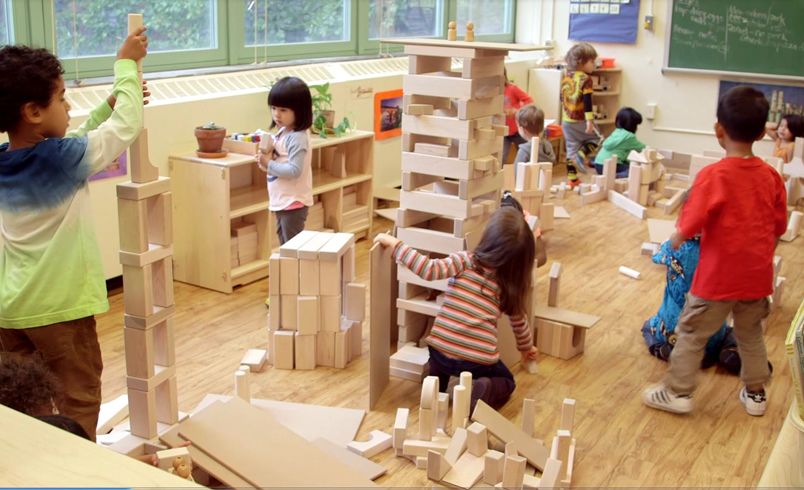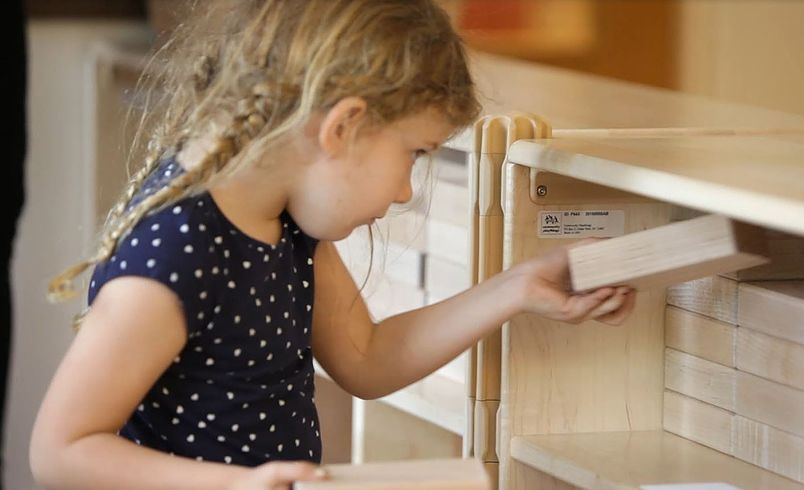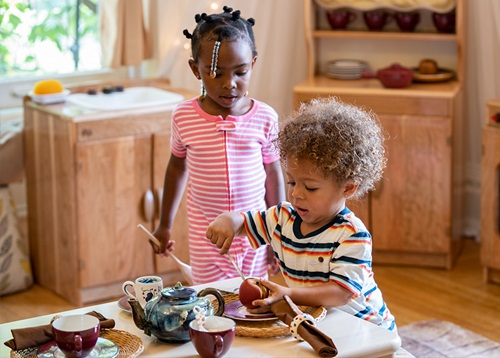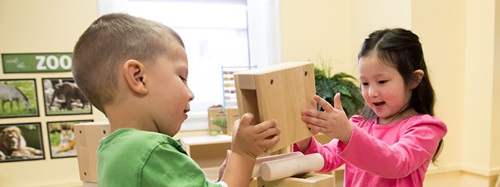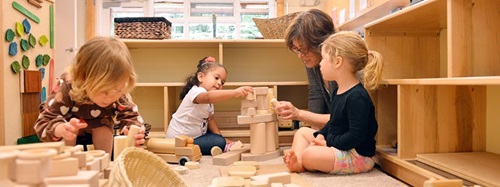The Role of the Teacher in Block Play
| February 2018Unit Blocks should be a valued part of every early childhood classroom, fostering independence, cognitive development, and cooperative play. However, the mere presence of a block area is not enough to get the full potential out of such learning tools. Many factors influence children’s experience with blocks, but possibly the most important component is the interest and support of the teacher.
To answer these questions, Community Playthings interviewed educators from a variety of programs with a strong block building component. Some of their answers are below. For more, watch our staff training video,Foundations of Learning: The Role of the Teacher.
Panel of Experts:
Jane Clarke—City and Country School (Director)
Elise Bauer—City and Country School
Nancy McKeever—Bank Street College
Bob Boyman—Pacific Oaks Children’s School (Director)
Anne Schiller—Pacific Oaks Children’s School
Anna Patterson—Bing Nursery School
Susan Wood—Children’s Center at Cal Tech (Director)
Pam McComas—Pacific Oaks Children’s School (Director-retired)
What can teachers do to generate an interest in block play in their classroom?
Anne Schiller: The most important thing a teacher can do to facilitate block play is to have great interest and reverence in blocks. It can't just be that you're leaving the blocks passively on the shelves hoping that [the children] will discover them. With blocks, it isn't like water or sand. Blocks are something you help children to discover. You show them. You discover blocks alongside them.
Jane Clarke: The teacher needs to create an atmosphere and a culture in the classroom, where the children know that their ideas are important and that the adult in the classroom is going to support and guide them into further exploring the ideas that they have.
One of the most important things that a teacher can do to support block play is to really trust in the learning experiences that are offered by blocks. Once a teacher offers the time, the space, and the guidance, the learning can really happen. And then a teacher needs to be fully engaged and fully present to observe what’s happening. They need to record that observation, analyze it, and build other opportunities from that point.
Anna Patterson: To encourage block play, it's important for the teacher to be present, and to support the children's thinking and ideas when they're block building. This means showing genuine interest in the children, getting down to their level, and asking them open-ended questions or commenting on the building. It’s so important for the teachers to be present.
When should a teacher insert themselves into the block play?
Jane Clarke: One of the most important parts of a teacher’s role is to be vigilant, to be watching closely for that moment when a child could benefit from some kind of adult interaction. That adult presence is a facilitating presence. It’s a very quietly active presence. Sometimes a teacher can help a child investigate further by saying nothing, by just standing next to the child, possibly touching the child on the shoulder. Maybe just giving a reassuring look to the child, or maybe handing the child a block from the shelf.
Pam McComas: It’s really important to understand that as the adult, you are the background. You are the supporting player. The children are on the main stage so to speak. It is an art to be quiet and to observe, to move in cautiously and carefully, depending on the situation. That’s just being a good observer. You’ll know intuitively from your knowledge of that child and your experience with blocks in general when would be a good time to step in.
Susan Wood: It’s always tricky to know when you should interject yourself as the adult into children’s play. You don’t want to disrupt their train of thought, but you also want to encourage the next level or stage. We refer to this as scaffolding. A little cue or prompt from the teacher can get [a child] to create things that are slightly above their own ability.
Elise Bauer: The ideal scene at our school is for there to be a hustle and bustle of children’s activity with the teacher looking on from the side, inserting herself in to ask a question, to redirect, or to clarify something. Helping children with the language they need to negotiate and collaborate, but not directing the play or inserting themselves into a problem. When children are disagreeing about something, it’s human instinct to want to jump in and help them solve the problem. Good teachers intuit the moment when they should jump in. If you jump in and help them solve it too soon, you’re robbing them of the opportunity to learn how to do it themselves.
How should a teacher respond to conflict in the block area?
Bob Boyman: When there’s a conflict in the block area, one of the things we do is we take a step back for a few moments and try to let [the children] problem-solve themselves because that’s a very important skill. Since block play is such a social activity there are a lot of times that happens. Often they will come to their own reasonable solution. That’s that process of learning to share.
Nancy McKeever: I think one of the big challenges for a teacher is to think about when to intervene, how to intervene, and how to support learning. I think there are some pretty clear guidelines. If a child is going to knock down a structure I would intervene, and say, “We don’t knock down structures,” “It’s dangerous”, or “It’s not your work”. If a child is going to throw a block I would definitely intervene. On the other hand it’s really knowing the children, and knowing what they’re capable of.
If you’re present in the block area you are observing how things are revolving and it makes your interaction or intervention more sensitive and appropriate to the child and the child’s needs. You can’t be across the room, assuming that a block area is going to function without your presence. Children need support in self-regulation sometimes. They need your adult interest.
How can the environment be set up to support block play?
Pam McComas: The environment is the number one thing—you’ve got to set it up in a way that is inviting to the age of the child that you are working with. You need to look at it through a child’s eyes and say, “What would pull me in? What would spark my interest?” The environment really is such a central part to the curriculum some people say the environment is the curriculum.
If you're going to have blocks you need to have enough space. You have to carve it out of your room. You have to make sure that you have created a space were children can be creative, experimental, and exploratory, so devote some space to it. Even more ideal is if you can have a space were children can leave things up overnight, because there’s that pride of ownership and investment in their work that is honored and respected by the way you treat it after it’s [finished].
Jane Clarke: I think the arrangement of the block area in any teacher’s classroom is crucial to the experience the children will have. The larger the space the children [are] given to interact with blocks open-endedly, the richer the experience will be. Also, more children will be able to be involved and interact together. The amount of time that children are given is also crucial. Classroom schedules can often be very rushed, but the longer we give the children to truly focus and engage with materials, the deeper their experience will be.
Bob Boyman: If you’re going to encourage [children] to do extensive block play, you have to be able to set up enough time for that to happen. Fifteen minutes isn’t going to be enough time. Twenty minutes isn’t enough time. It’s very important that you allow for time for them to be able to create.
What are some effective strategies for cleanup time?
Susan Wood: At some point it’s always important to clean up the blocks. Having the blocks labeled on the shelf helps a lot. Use clean up as a learning opportunity instead of just a chore. For example, “I’m going to start with units. We’re going to next do double units,” can turn the whole pickup thing into more of a game than as a task. Sometimes we give children some warning too. We might give them a clipboard and say, “Why don’t you draw this so if you choose to do it tomorrow you'll know where to start.” We use digital cameras to also take pictures. There’s something really validating for a child when you take a picture of their work. They worked hard on it so to [taking] that picture says, “This was worth saving.”
Elise Bauer: Block pickup is an essential part of the building process. At our school we call it un-building. Just as you carefully place the blocks to build, you carefully dismantle a structure and sort it into its various shapes. It’s calming to the children. It helps them learn about organization. It is respect for their work and it’s a structure for them to follow that helps them to understand about taking care of things.
More staff training materials on block building:
https://www.communityplaythings.com/resources/videos/the-role-of-the-teacher-in-block-play
https://www.communityplaythings.com/resources/videos/building-stem-skills

